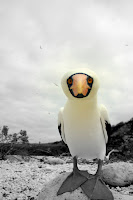






We climbed over the mountains today, descending at Puno, on the shores of Lake Titicaca.
Located at 3830 m above sea level, Puno is the highest altitude of any place we slept on the journey.
After spending a night in Puno, we will head out by boat across Lake Titicaca. En route to Taquile Island we will visit the floating reed islands of the Uros people.
I am most excited about an overnight homestay that is sure to provide an opportunity to learn more about rural life in the Peruvian highlands and to participate in local traditions.
Tomorrow we set sail on Titicaca Lake, the largest lake in the world above 2000m, and the views from both Amantaní and Taquile Islands are stunning. I learned that the locals are famous for their weaving so I plan to purchase many gifts here! From there we head to Amantani where we will stay overnight with a local family and enjoy a competitive soccer match with the locals.
The following morning we will visit the floating islands of Uros en route to Puno.The Totora reeds that grow in the shallows of the lake are used for making everything from the islands themselves to the model boats that the islanders sell. The islands are made up of layers upon layers of reeds; as the layers closest to the water start to rot, they are replaced with fresh reeds on top. The reeds are also used to build their boats, which if constructed well will last up to 6 months.The people of Taquile Island's unique culture, style of dress and lifestyle make for a memorable visit. The men of the community do all the knitting, as this is strictly a male domain, while the women do the spinning.
Located at 3830 m above sea level, Puno is the highest altitude of any place we slept on the journey.
After spending a night in Puno, we will head out by boat across Lake Titicaca. En route to Taquile Island we will visit the floating reed islands of the Uros people.
I am most excited about an overnight homestay that is sure to provide an opportunity to learn more about rural life in the Peruvian highlands and to participate in local traditions.
Tomorrow we set sail on Titicaca Lake, the largest lake in the world above 2000m, and the views from both Amantaní and Taquile Islands are stunning. I learned that the locals are famous for their weaving so I plan to purchase many gifts here! From there we head to Amantani where we will stay overnight with a local family and enjoy a competitive soccer match with the locals.
The following morning we will visit the floating islands of Uros en route to Puno.The Totora reeds that grow in the shallows of the lake are used for making everything from the islands themselves to the model boats that the islanders sell. The islands are made up of layers upon layers of reeds; as the layers closest to the water start to rot, they are replaced with fresh reeds on top. The reeds are also used to build their boats, which if constructed well will last up to 6 months.The people of Taquile Island's unique culture, style of dress and lifestyle make for a memorable visit. The men of the community do all the knitting, as this is strictly a male domain, while the women do the spinning.

















































